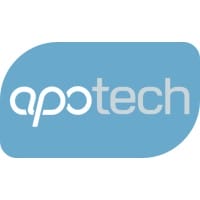
Navigating the QMSR
What Medical Device Manufacturers Need to Know
The new QMSR (Quality Management system regulation) is the result of aligning the current good manufacturing practice (cGMP) requirements of the FDA’s Quality System Regulation (QSR) with the international consensus standard for medical device quality management systems, ISO 13485:2016, signifying a huge step towards harmonisation. On February 2nd 2024, the FDA published the updated 21 CFR Part 820 with the publication of the QMSR. However, the QMSR is expected to come into enforcement on February 2nd 2026, giving manufacturers some time to comply with the new regulation and, for now, continue to comply with the QSR. This final rule is the latest action taken by the FDA to promote consistency in the regulation of devices. This action will harmonize the FDA’s cGMP regulatory framework with that used by other regulatory authorities. Device manufacturers may need to update documents and align with the QMSR’s specific requirements, especially regarding risk management and electronic records and signatures compliance. The QMSR is concise, indicating the FDA’s effort to simplify and make regulations more efficient, focusing on safe and effective product manufacturing. Most of the existing QSR has been replaced with entirely new sections under the new QMSR.
But what if I am not familiar with the ISO?
Well a first good step is to purchase a copy of the standard and to read it through thoroughly. You can find the standard at https://www.iso.org/standard/59752.html
Although ISO 13485 and the current Part 820 are substantially similar, the QMSR includes necessary modifications to ensure full compliance with all regulatory requirements. Those already aligned with ISO 13485:2016 will face minimal impact, whereas manufacturers solely focused on the U.S. market and currently complying only with 21 CFR Part 820 will experience significant changes.
No! You will still need to modify your QMS to meet ISO 13485:2016 but you are not required to seek certification if you only sell in the US market. However, if you plan to also sell in Canada, Europe or Australia, in most cases you will need to seek ISO 13485 certification.
So, despite the QMSR and ISO 13485 being relatively similar, there are some significant changes that manufacturers should be aware of:
- Terminology (QMSR 820.3) FDA adopts the ISO terms, replacing DMR, DHR, and DHF.
- Records Control (QMSR 820.35 – NEW!) QMSR follows the ISO records control, including UDI requirements and confidentiality marking under FOIA.
- Labelling and Packaging (QMSR 820.45) FDA retains its labelling inspection rules, requiring compliance with both the ISO clause 7.5.1 and QMSR 820.45.
- Risk Management Enhanced focus on risk management throughout the device lifecycle as per the ISO, suggesting possible need for external consulting.
While the new QMSR introduces changes, it closely aligns with ISO 13485:2016, so a complete overhaul of your QMS isn’t necessary. The transition aims to simplify processes for manufacturers, making compliance more straightforward. It is important to note that holding ISO 13485:2016 certification does not automatically ensure compliance with the new QMSR. ISO 13485-certified companies will still be subject to FDA inspections and will not receive ISO 13485 certification from FDA inspections.
We strongly suggest not waiting to begin your transition to QMSR. Wherever you are in your QMS journey, we can guide you to start taking the necessary steps to get ready for QMSR!
- We have QSR but not ISO 13485
Step one is to familiarise yourself and your team with ISO 13485. Now is the ideal time to increase your understanding of the standard in preparation for the future QMSR. We recommend you follow this by conducting a comprehensive gap analysis. Identify any gaps between your current QSR practices and ISO 13485:2016 requirements. This gap analysis will serve as the foundation for your transition plan. This plan should detail actionable steps, assigned responsibilities, deadlines, and metrics for tracking progress. Next, implement the necessary changes to your quality management system based on the gap analysis. This may involve updating or creating new procedures, documentation, quality policies, and practices to align with QMSR and ISO 13485:2016 requirements.
Don’t forget undertake a comprehensive training program for your team on all the changes made!
To ensure that changes to your QMS are effective, read the FDA QSIT and conduct internal audits and use findings to make amendments in preparation for your FDA audit!!
2. We have ISO 13485 but not QSR/QMSR
If you do not intend to sell in the USA, you should continue to focus on adhering to the ISO and do not need to make any changes to your QMS at this time. If you plan to sell in the USA in the future, you will need to prepare for compliance with the FDA’s QMSR, which aligns with ISO 13485 but has some additional requirements. Again, we recommend that you conduct a thorough gap analysis to identify differences between your existing QMS and the QMSR, paying particular attention to additional FDA requirements that may not be covered by ISO 13485. Similar to previously, we recommend you then create a transition plan to optimise internal processes to align with QMSR requirements, before reviewing and updating documentation to align with QMSR standards. Don’t forget to train your team on all the changes to your QMS!
3. We don’t have anything!
If you have neither QSR nor ISO 13485, we strongly suggest that you begin by reading the ISO before performing a gap analysis to assess your current processes and identify areas that need improvement before developing and implementing your QMS. Following this, you can then follow the steps in paragraph 1 to incorporate the additional requirements set out in the QMSR, and become compliant in both the EU and USA.
Apotech can support you during your QMSR transition by providing expert guidance and hands-on assistance.
Please don’t hesitate to reach out to use at:
contact@apotechconsulting.com
(+44) 020 453 254 56

